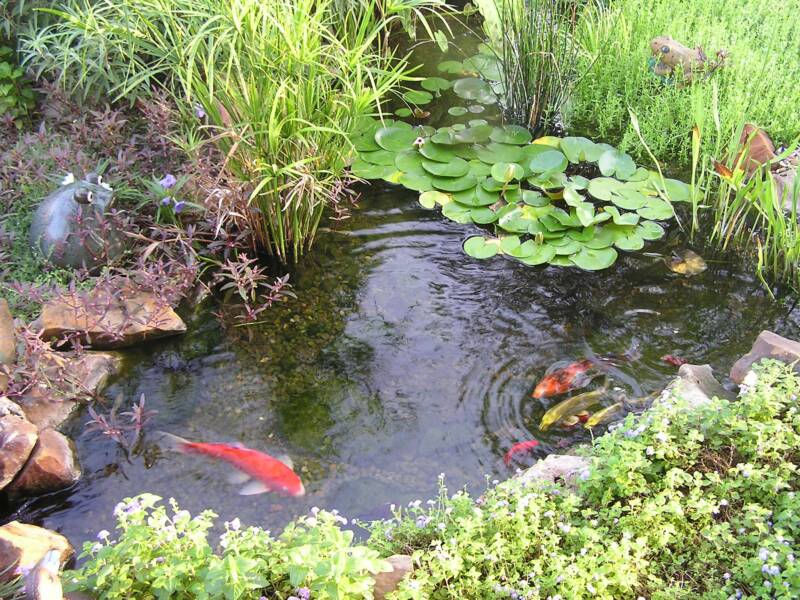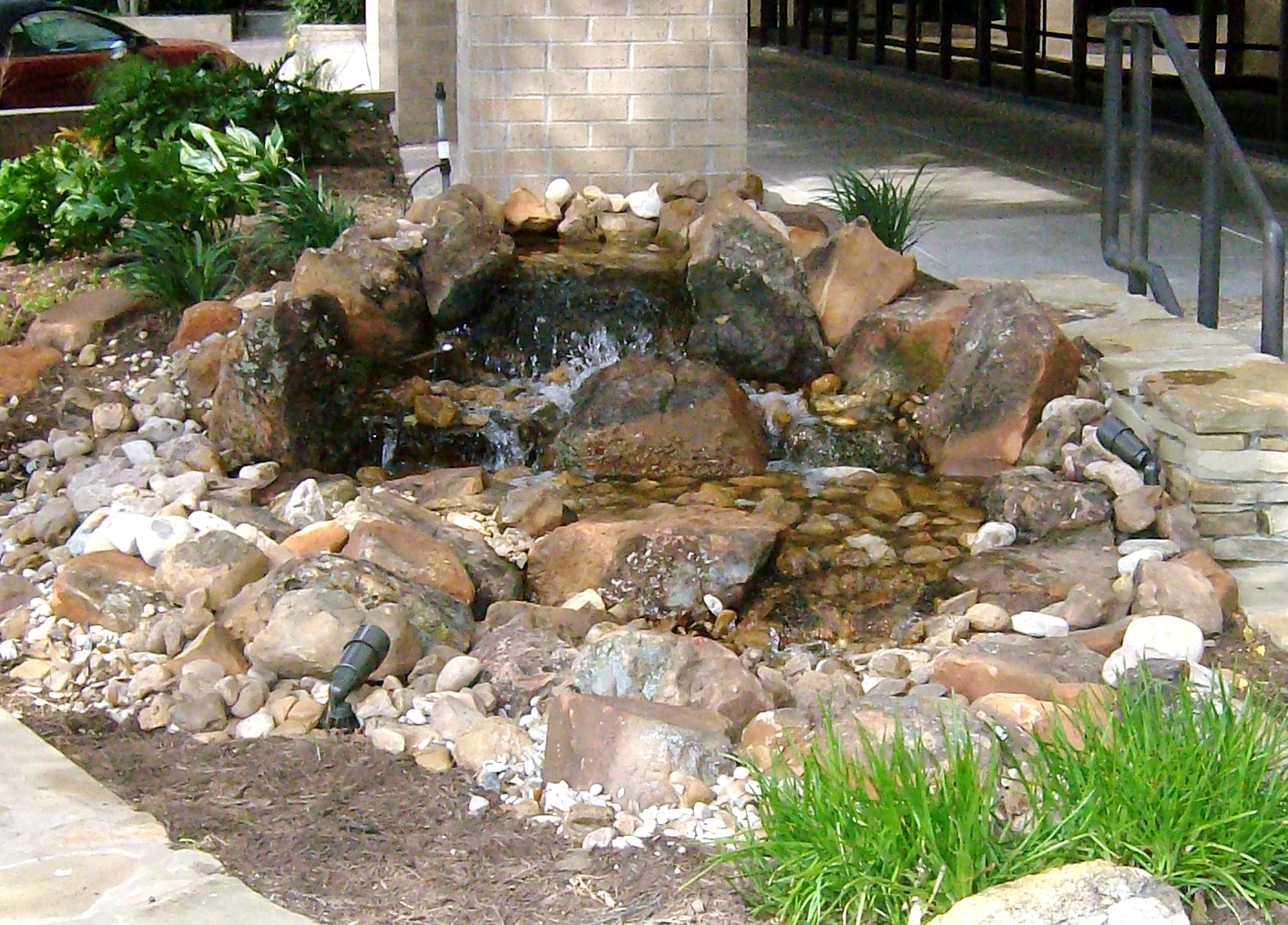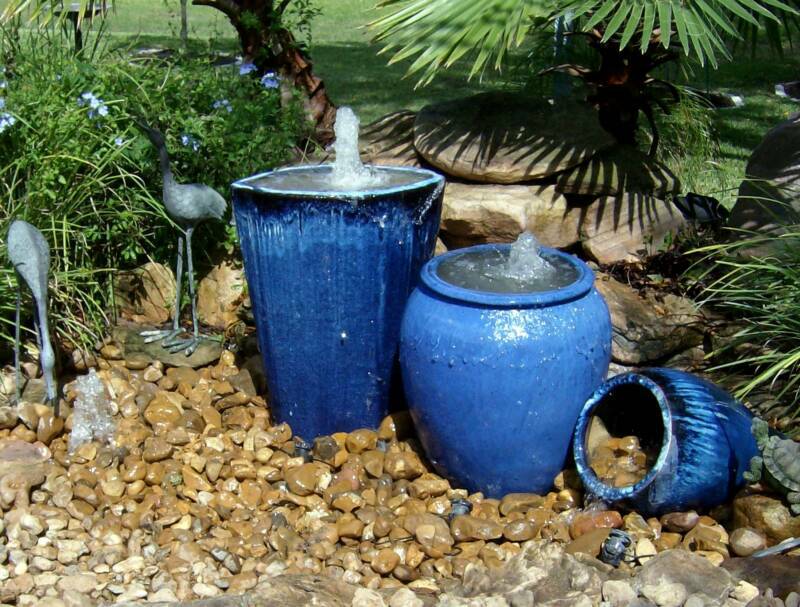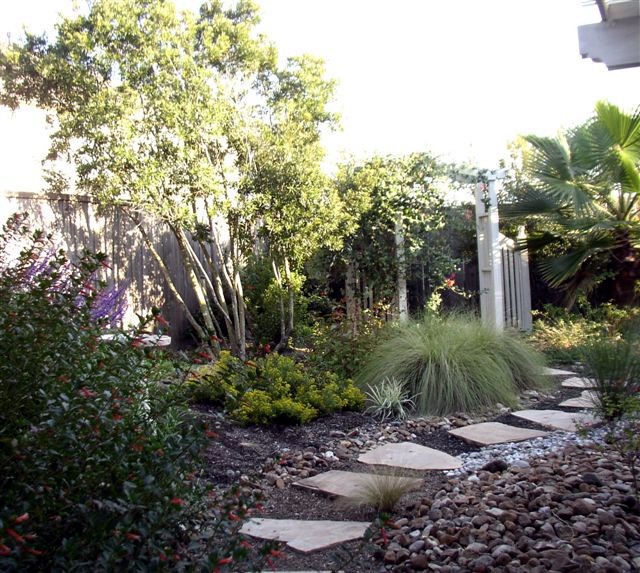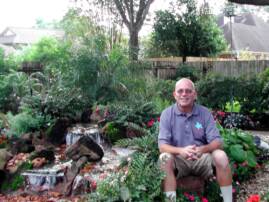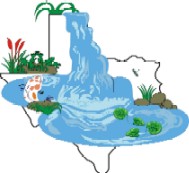


Rainwater Harvesting
Organic Ecosystem Ponds
Pondless Waterfalls
Urn and Fountain Features
Water-Wise Landscapes
Meet Your Water Feature Professionals


Texas Ponds and
Water Features
Ponder This Building!
By Matt Boring
TexasPonds.com
When I set out to build my first 'pond' with a tiny little waterfall on the side—a Mother's Day gift for my Mom in the early nineties—I never would have imagined that by 2008 I would have built over 100 beautiful, naturally-balanced water features. Like many people, I had no idea what I was doing. I just grabbed some book with a title like '101 Things You Can do Around the House' or something similar and started reading. It basically said to dig a hole, put some plastic liner in it, and surround the whole thing with flagstone to hold the edge of the liner in place. The pump was to sit in the bottom of the pond and the waterfall would be the rocks I would stack on the backside of the pond. The book didn't say anything about fish or plants or actually filtering the water in the water feature. So I assumed that these factors were unimportant.
After hauling several loads of rock to the house in the hatchback of my Mustang, I got started with the excavation. It couldn't have been more than two feet in diameter, but since it was going in the teeny backyard of a condominium, it would still be proportional. It was basically just there to catch the water so that it could be returned to the upper reaches of the waterfall. Real pond liner was hard to come by in those days so I got some kind of plastic from a hardware store, thinking that if I doubled the liner, it would effectively double its thickness. Bad move!
The waterfall's debut was great. The water danced and flowed down the waterfall stones and created quite a relaxing sound in that tiny backyard. We could even leave the windows open and hear it from inside on evenings when it was cool enough. But within a couple of days it happened. Somehow water found its way between the two layers of plastic I had used for liner and pushed the upper layer up above the surface of the pond. I had to cut that layer out. But within a couple of days the other layer also floated up. I decided to cut the liner out and smear concrete into the excavation to create a little concrete pond. The concrete held water and it definitely wasn't going to float so I thought I was in business again. But the water soon turned so green that you couldn't see into it at all. Since I didn't know anything about filtration in those days and since I wasn't going to be keeping fish or plants in this little water feature, I just added a little Clorox and it cleared right up. This was fine for this pond since it was mainly there to look nice and generate sound. But at the same time, I was glad I hadn't tried anything more ambitious. A large green smelly fish pond would have been a nightmare and I would have had no idea how to clean it up, probably killing some fish along the way.
Flash forward a few years and I find myself working as a landscape designer for commercial properties. A catalog comes across my desk saying that I could add water gardens to my company's list of services. It had a picture of a beautiful water garden on its cover. The water was clear to the bottom and you could easily see the Koi and other fish in the pond. I was hesitant at first remembering the green water pond I had built years earlier. But I kept reading. The catalog talked about a naturally-balanced organic holistic way of water gardening that didn't require any chemicals (Clorox included) to stay clean and clear. It spoke of creating a balanced ecosystem within the water garden that would starve out the excess nutrients that allowed algae to grow. Furthermore, it spoke of the need to provide wetland habitats in people's yards to offset the destruction of those natural habitats that often took place as development pushed into formerly pristine wilderness. It seemed that this company wanted to not only sell pond systems, they were generally interested in protecting the delicate balance between nature and mankind's often reckless drive to develop and sell as much land as possible. And besides that, they were willing to teach me how to install their products correctly in a one-day hands-on training class.
I took the class, and then a more advanced one and left both training events knowing that I had what it took to build beautiful natural-looking water features for my clients. After all, I was camping and hiking in the Texas Hill Country almost every weekend, observing natural water features. I could see them when they were dry in the summer and notice how the rocks were shaped and placed as if by unseen hands. I would then go back after it rained to see how the water moved over these rock formations. So when I started building my own features, it was only an attempt to re-create what I'd seen on my hikes.
Now it's 2008 and I've been building water features for almost a decade. I've never changed my pond supply company in all that time. The system has always worked just as it was advertised so I've had no reason to change or experiment. I've also never changed my philosophy about trying to recreate nature both in the appearance of my water gardens and in the way they function. And my supplier, Aquascape Designs, hasn't changed theirs either. I appreciate a company that talks green and ACTS green too. They don't use the talk about natural ecosystems and preserving our environment simply to sell pond components, they live it. They can talk the talk because they walk the walk.
Like many companies, Aquascape got its start from the home of the company's founder. As the business grew, they were forced to rent a building, then another bigger building, then another even bigger building with a warehouse. But now it was time to actually build and own their own property. And in the process of putting their money where their mouth is, they went green big time.
Aqualand was built with the largest sloping green roof in North America. The metal in the building's skin as well as the steel in the frame are made from recycled materials. All bamboo and other selected woods are quick growth species and renewable. All the drywall came from recycled content from within 100 miles. And 80% of all materials on the project came from within 500 miles to reduce fuel usage. The vegetative roof reduces off-site outflow by 100%. Day lighting systems maximize natural daylight and minimize the need for artificial light. All plumbing fixtures are low water use fixtures. All the HVAC and lighting systems are linked to a computer that monitors usage and can generate models that can be used to balance energy usage. Even much of the furniture and fabrics have green points, meaning that parts are recycled. These are just some of the positive environmental impacts of the building itself. The ponds and waterways on the property will become the basis for an ecosystem that will form on its own, with insects, birds, frogs, turtles, and much more. If you build it, they will come.
Even though I don't work for them, I feel proud to be associated with a group that cares so much about our planet. Many companies use green rhetoric to help move their product (even oil companies), but few of them back it up with significant action.
To find out more about Aqualand and green building techniques, you can visit www.aquascapeinc.com/about_us/about-aqualand.php

